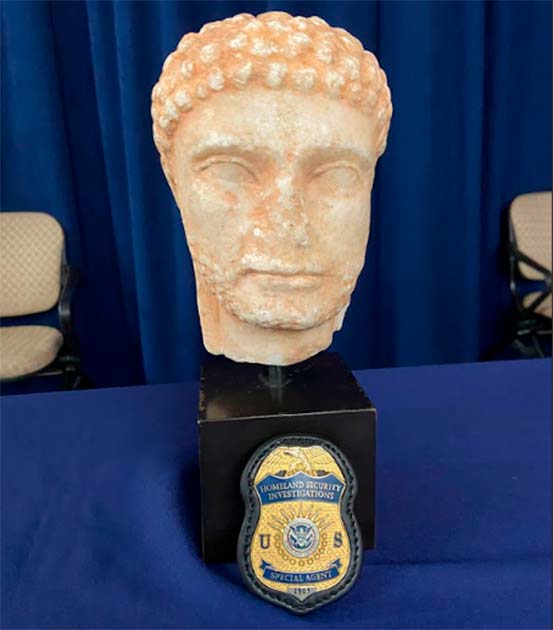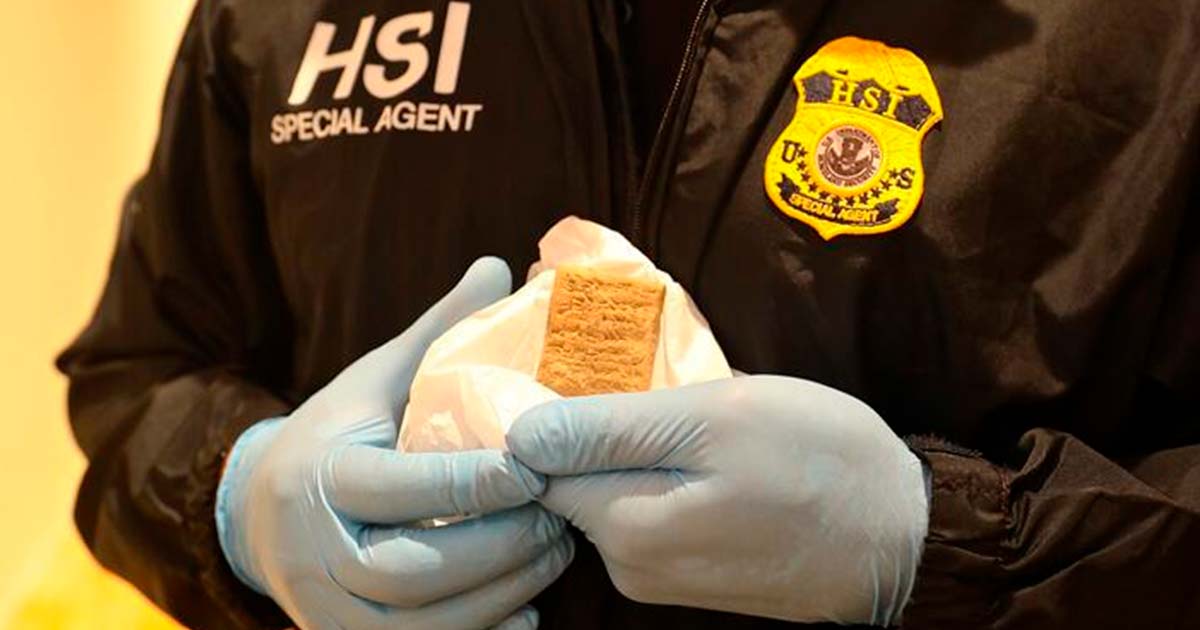Illicit Artifact Trading Falls From Top Three Dark Economies
For at least half a century it has been believed, and repeated, that the buying and selling of illegal artifacts was in the top three most illicit trades in the modern world. However, new research demonstrates that this claim is “unfounded,” and that it’s causing damage to communities around the globe.
Since the 1970s we, the public, have been told by global institutions that in the top three of the most illicit trades every year, alongside drugs and human and animal trafficking, is the selling of illegal artifacts and cultural objects. This, it turns out, is a long running unsubstantiated claim, and the false belief is hurting people.
According to a new study in the Cambridge publication Antiquity, the idea that the illicit antiquities trade now comes in as the number three largest illicit trade in the world, “is completely unfounded.” And furthermore, such an “uncritical acceptance of the factoid has the potential “to misdirect policy and make it harder to combat the trade of illegal artifacts.”
- Billion-Dollar Jewelry Heist from Green Vault in Germany
- Photographic Marvels: 12 Stunning Historic Palaces You Need to See to Believe

Illicitly traded statue seized by the US Department of Homeland Security HSI. ( US Homeland Security Investigations/Antiquity Publications Ltd)
Chaos Resulting From Confusion
Before we look at the findings of the new study, let’s first attempt to determine the value of the world’s illicit trade of artifacts and cultural objects. As you will see, this is a quite impossible task. According to a July 2023 article in The National News, the global sales of art and antiquities reached more than $50 billion, and the estimated value of the illegal trafficking of cultural property was around another “$10bn every year.”
Now consider, in 2013, UNESCO estimated the illegal antiquities trade to be worth only “US$2.2 billion annually.” And according to Euro News, during the pandemic, while almost the entire world was locked down, the trade in the antiquities black market was more active than ever, generating “$10 billion (€9 billion) in just two years.”
How can there exist such a great disparity in the value of the world's illicit artifacts and cultural goods trade, between different organizations, as is made evident above? The answer is perhaps obvious, but these great swings occur because nobody has a clue as to what the true value really is. And this is why every published figure is prefixed with the word “estimated.” But these “estimates” have an unseen human cost, which is buried beneath the dollar signs, according to the new study.
- Stealing History: 10 of the Most Tragic Artifact Thefts in History
- 10 Spectacular Treasures That Have Never Been Found

Maya temple façade at Placeres, Mexico, being looted. (Credit: Donna Yates. Provided by David Friedel and reproduced with permission from the original photographer/Antiquity Publications Ltd)
Smashing Paradigms: Forging Fresh Roads Ahead
Drs Donna Yates and Neil Brodie, from the Trafficking Culture group, examined scores of studies relating to the traditional belief that illicit artifact trade was “in the top three,” along with drugs and the trafficking of humans and animals. In their new study the pair of researchers identify a note in a 1974 edition of the Journal of Field Archaeology claiming that the international trafficking of illegal artworks was “second only to Narcotics.” They suspect this was the origin of the “top three” myth.
The paper says that by the 1980s the factoid, that illegal artifacts trading was the third most illicit in the world, had become “embedded in the academic literature and in the popular press. However, they point out that not a single academic had ever cared to actually study this allegation, to realize what truth, if any, lay behind the often repeated claim.
When Estimating Does Damage
The offending claim, or factoid, started to gain traction in the late 80s, still without evidence, when UNESCO and Interpol started using it. But the authors of the new paper say the public understanding of the situation, and political policy, “need to be based on evidence, not rhetoric.” They point out that this “unsubstantiated factoid” should not influence the policymaking of major international bodies. The authors suggest such unfounded “estimating” only serves to undermine the importance of real data, and furthermore, that it “potentially leads to ineffective measures being taken against the illicit antiquities trade”.
The study authors also write that the traditional approach to artifact crime, where it is most often measured against monetary value alone, rather than through the destruction it causes within society, “is upsetting”. It is argued that antiquities are fundamental components of our heritage and identity, and that the results of illegal trading, financially mask the social harms which are more damaging.
“Lazily Repeating” Has To Stop
The paper concludes that the “baseless factoid,” arises from the persistent valuing of the illicit trade in antiquities and cultural objects only in financial terms. This, according to the authors, “evidences a serious flaw in public understanding and thus in our public presentation of the harms related to looting and trafficking.” The researchers propose that public understanding, and policy making, should be based “on evidence, not rhetoric,” and that such claims must be substantiated with “high-quality data and expert analysis.”
The study says institutions, such as UNESCO, are “lazily repeating” what should by now be nothing more than “another discredited, unfounded, factoid.” And that the uncritical repetition of unsubstantiated, so-called ‘facts,’ can undermine legitimate efforts to prevent looting, trafficking and illicit sale of antiquities”. To combat the damage caused by such speculative publicized factoids, the researchers suggest that the results of their analysis be disseminated in “clear and meaningful ways”.
Top image: Illicitly traded cuneiform tablet seized by the US Department of Homeland Security HSI. Source: US Homeland Security Investigations/Antiquity Publications Ltd
By Ashley Cowie
References
Yates, D., & Brodie, N. (2023). The illicit trade in antiquities is not the world's third-largest illicit trade: A critical evaluation of a factoid. Antiquity, 1-13. doi:10.15184/aqy.2023.90

















